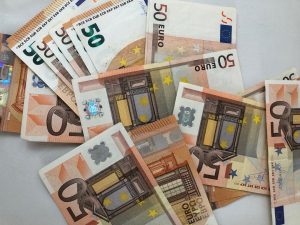Standard deviation is a statistical measure that calculates the amount of dispersion or variability of a set of data from its mean or average. In the world of forex trading, standard deviation levels are used to identify the level of market volatility and to determine the potential trading opportunities.
Drawing standard deviation levels on forex charts is a popular technique used by traders to identify potential support and resistance levels, as well as to determine the likelihood of a price reversal or breakout. In this article, we will explain how to draw standard deviation levels in forex charts.
Step 1: Calculate the Mean
The first step in drawing standard deviation levels is to calculate the mean or average price of a currency pair over a specific period. This can be done using various technical indicators such as moving averages, Bollinger bands, or other trend-following indicators.
For example, if you are using a 20-day moving average, you would add up the closing prices of the last 20 days and divide by 20 to get the mean price.
Step 2: Calculate the Standard Deviation
The next step is to calculate the standard deviation of the price over the same period. The standard deviation measures the amount of variability or dispersion of the price from the mean.
To calculate the standard deviation, you can use a formula such as the following:
Standard Deviation = Square Root of [Sum of (Price – Mean)^2 / Number of Periods]
This formula calculates the sum of the squared differences between each price and the mean, divided by the number of periods, and then takes the square root of the result.
Step 3: Draw the Standard Deviation Levels
Once you have calculated the mean and standard deviation, you can start drawing the standard deviation levels on your forex chart. The most commonly used standard deviation levels are 1, 2, and 3.
To draw the standard deviation levels, you can use horizontal lines on your chart. The first level is the mean price, which you can mark with a horizontal line. The second level is the mean plus one standard deviation, which you can mark with another horizontal line above the mean line. The third level is the mean plus two standard deviations, which you can mark with another horizontal line above the second level. Finally, the fourth level is the mean plus three standard deviations, which you can mark with another horizontal line above the third level.
Step 4: Interpret the Standard Deviation Levels
Once you have drawn the standard deviation levels on your forex chart, you can use them to interpret the price action and identify potential trading opportunities.
The first level, which is the mean price, can be used as a potential support or resistance level. If the price is trading above the mean, it may be an indication that the market is bullish, and the price may continue to rise. If the price is trading below the mean, it may be an indication that the market is bearish, and the price may continue to fall.
The second level, which is the mean plus one standard deviation, can be used as a potential resistance level. If the price is trading above this level, it may be an indication that the market is overbought, and the price may reverse or consolidate. Conversely, if the price is trading below this level, it may be an indication that the market is oversold, and the price may bounce back.
The third and fourth levels, which are the mean plus two and three standard deviations, can be used as potential breakout levels. If the price breaks above the third level, it may be an indication that the market is experiencing a strong uptrend, and the price may continue to rise. If the price breaks below the third level, it may be an indication that the market is experiencing a strong downtrend, and the price may continue to fall.
Conclusion
Drawing standard deviation levels on forex charts is a useful technique for identifying potential support and resistance levels, as well as for determining the likelihood of a price reversal or breakout. By calculating the mean and standard deviation of a currency pair over a specific period and drawing the standard deviation levels on the chart, traders can interpret the price action and make informed trading decisions.





